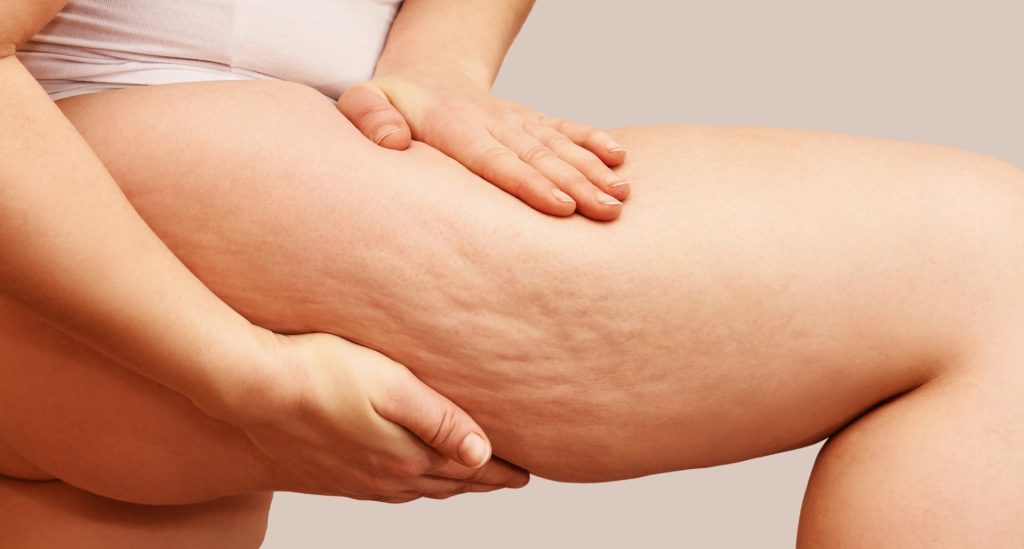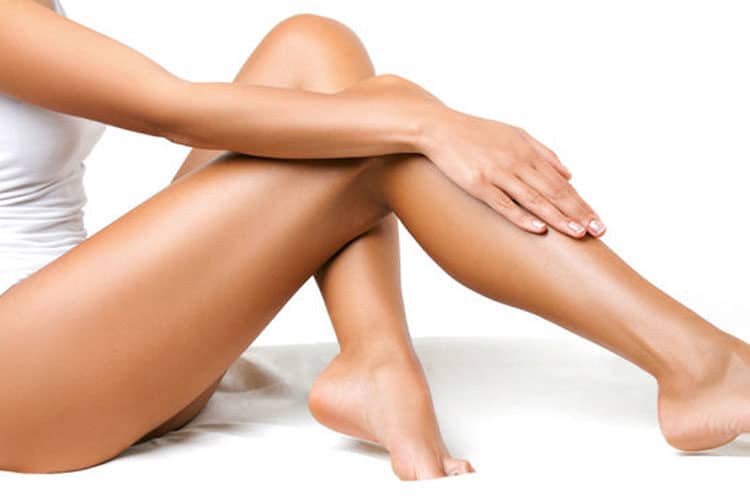Did you know that around 80% of women experience cellulite at some point in their lives? Cellulite and aging skin go hand in hand, creating a challenge for many. As we age, our skin loses elasticity and firmness. This makes cellulite more noticeable. Factors like genetics, diet, and lifestyle choices can worsen the appearance of cellulite.
Understanding this connection helps us tackle the issue effectively. There are ways to improve skin texture and reduce the visibility of cellulite. From skincare routines to lifestyle adjustments, small changes can make a big difference. This post will explore practical tips and solutions to combat cellulite while promoting healthier aging skin.
Key Takeaways
-
Understand that cellulite is a common issue, especially as skin ages, and it can be influenced by factors like genetics and hormonal changes.
-
Recognize the symptoms of cellulite, such as dimpled skin, to differentiate it from other conditions like lipedema.
-
Explore various treatment options, including topical creams and professional therapies, to find what works best for your skin type.
-
Implement lifestyle changes, such as regular exercise and a balanced diet, to help manage and reduce the appearance of cellulite.
-
Adopt prevention tips, like staying hydrated and maintaining a healthy weight, to minimize the development of cellulite over time.
-
Consult a healthcare professional if you notice significant changes in your skin or have concerns about cellulite and its effects on aging skin.
Understanding Cellulite and Aging Skin
What is Cellulite?
Cellulite is a common skin condition. It appears as a dimpled or lumpy texture on the skin. This condition often affects areas like the thighs, buttocks, and abdomen. Many people associate cellulite with weight gain, but it can occur in those at any weight. Genetics also play a role in its development.
Aging Skin and Elasticity
As people age, their skin undergoes significant changes. One major change is the loss of elasticity. Skin becomes thinner and less firm over time. This reduction in elasticity can make cellulite more noticeable. In younger individuals, the skin tends to bounce back quickly. However, older skin does not have this same ability.
The body produces less collagen as it ages. Collagen is essential for maintaining skin structure and firmness. When collagen levels drop, the skin can sag. This sagging can push fat cells closer to the surface, making cellulite more visible.
Hormonal Changes
Hormones significantly influence both cellulite formation and skin aging. Estrogen, for example, plays a critical role in skin health. As women age, estrogen levels decline, especially during menopause. This decline can lead to a decrease in collagen production.
Lower estrogen levels affect blood flow and circulation in the skin. Poor circulation can reduce nutrient delivery to skin cells. As a result, the skin may lose its youthful glow and become more prone to developing cellulite.
Moreover, hormonal fluctuations can increase fat storage in certain areas of the body. This accumulation of fat can worsen the appearance of cellulite. Both men and women experience hormone changes throughout life that impact their skin.
Prevention and Management
While cellulite is common, there are ways to manage its appearance. Regular exercise helps maintain muscle tone and improve circulation. A balanced diet rich in fruits, vegetables, and healthy fats supports overall skin health.
Staying hydrated also plays a vital role in keeping skin plump and elastic. Drinking enough water helps flush out toxins from the body. Avoiding smoking and excessive alcohol consumption can benefit skin appearance.
Several treatments are available for those seeking to reduce cellulite visibility. These include topical creams, laser therapy, and massage techniques. Consulting with a dermatologist can provide tailored solutions based on individual needs.
Causes and Symptoms of Cellulite
Structural Changes
Cellulite forms due to changes in the connective tissue beneath the skin. This tissue, known as fascia, can weaken over time. As it weakens, fat cells push through the connective tissue, creating a dimpled appearance on the skin’s surface. Aging skin loses elasticity and collagen, making these changes more noticeable.
The thickness of the skin also affects how cellulite appears. Thinner skin reveals more underlying fat deposits. Therefore, as people age, they may notice an increase in the visibility of cellulite.
Common Areas
Certain areas of the body are more prone to developing cellulite. The thighs, buttocks, and abdomen are common spots where cellulite accumulates. These areas have more fat storage and less muscle tone compared to other regions.
Women often experience cellulite more than men due to differences in fat distribution. Hormonal factors contribute to this difference. Genetics also play a role in determining where cellulite develops.
Hormonal Influence
Hormones significantly impact the development of cellulite. Estrogen is one of the key hormones involved. It affects blood flow and fat storage in women. As estrogen levels decline during menopause, many women notice an increase in cellulite.
Other hormones like insulin and cortisol also influence how fat is stored in the body. High insulin levels can lead to increased fat storage, while high cortisol levels can affect skin health and elasticity.
Understanding these hormonal effects helps explain why some people develop cellulite earlier than others.
Differences Between Cellulite and Lipedema
Cosmetic Condition
Cellulite is a cosmetic condition that affects many people, especially women. It appears as dimpled skin, often on the thighs and buttocks. This happens due to fat deposits pushing against the skin. Hormones, genetics, and lifestyle choices can contribute to its development.
Unlike cellulite, lipedema is not just a cosmetic issue. It is a medical disorder that involves more than just appearance. People with lipedema often experience pain and discomfort. The swelling in the legs can be significant, making daily activities challenging.

Painful Swelling
Lipedema causes painful swelling in the lower body. This swelling may feel heavy or uncomfortable. In contrast, cellulite does not typically cause pain. Individuals with lipedema may notice that their legs swell after standing or sitting for long periods.
The fat accumulation in lipedema is different from regular fat. It tends to be disproportionate, affecting mainly the legs and sometimes the arms. This abnormal fat distribution can lead to mobility issues over time.
Medical Diagnosis
Diagnosing lipedema requires a medical professional’s expertise. Doctors look for specific symptoms and patterns associated with this condition. Key signs include swelling that does not respond to diet or exercise and tenderness in affected areas.
In contrast, cellulite does not need medical diagnosis or treatment. Many people seek cosmetic solutions for cellulite, such as creams or treatments like laser therapy. However, these options do not address any underlying health issues.
Treatment Options
Treatment for lipedema is essential for managing symptoms. Options include compression garments, physical therapy, and sometimes surgery. These methods help reduce pain and improve mobility.
Cellulite treatments focus on improving appearance rather than health. Common methods include topical creams, massage, and laser treatments. While they may enhance the skin’s look, they do not eliminate cellulite completely.
Summary of Differences
-
Cellulite: Cosmetic issue; painless dimpling of skin.
-
Lipedema: Medical disorder; painful swelling and fat accumulation.
-
Diagnosis: Cellulite does not require medical evaluation; lipedema needs professional diagnosis.
-
Treatment: Cellulite focuses on aesthetics; lipedema requires medical intervention.
Diagnosing Cellulite
Visual Evaluation
Cellulite diagnosis mainly occurs through visual examination. Doctors assess the skin’s appearance, texture, and dimpling. They look for lumps and bumps on the skin’s surface. This method is straightforward and does not require complex medical tests.
Distinguishing Conditions
It’s crucial to differentiate cellulite from other skin issues. Conditions like lipedema or varicose veins may have similar appearances but differ significantly in nature. Lipedema often involves swelling and pain, while cellulite primarily affects the skin’s surface. Recognizing these differences helps in understanding the treatment options available.
Professional Consultation
Consulting a dermatologist is wise if there are uncertainties about the diagnosis. Dermatologists specialize in skin conditions and can provide a thorough evaluation. They may use tools like ultrasound to assess the deeper layers of the skin when needed. This step ensures an accurate diagnosis and appropriate treatment plan.
Treatment Options for Cellulite
FDA-Approved Treatments
Several FDA-approved treatments exist for cellulite. These options include Cellfina®, Cellulaze®, and Qwo®.
Cellfina® is a minimally invasive procedure. It targets the fibrous bands under the skin that cause dimpling. Results can last for up to three years.
Cellulaze® uses laser technology. It treats the structural problems beneath the skin. This method also increases collagen production, which helps improve skin elasticity. Patients often see results that last for at least a year.
Qwo® is an injectable treatment. It contains enzymes that break down the fibrous bands causing cellulite. This option requires multiple sessions but offers noticeable improvements in appearance.
Non-Invasive Options
Non-invasive options are also available for treating cellulite. Laser therapy is one popular choice. This method uses focused light to heat the skin and stimulate collagen production. Many patients report smoother skin after several sessions.
Acoustic wave therapy is another effective non-invasive treatment. It uses sound waves to break down fat cells and improve blood flow. Results can vary, but many find it beneficial for reducing the appearance of cellulite.
Temporary Nature of Treatments
Most cellulite treatments offer temporary results. Patients need maintenance to keep their skin looking smooth. Regular follow-up treatments are often necessary.
Results from non-invasive methods may last several months, but they are not permanent. Patients should plan for ongoing sessions based on their individual needs.
Invasive procedures like Cellfina® and Cellulaze® can provide longer-lasting results, yet they too may require touch-ups over time. It’s essential to discuss expectations with a healthcare provider before starting any treatment.
Lifestyle Changes to Manage Cellulite
Regular Exercise
Regular exercise plays a crucial role in managing cellulite. It helps improve muscle tone and reduces fat. Engaging in physical activity can enhance blood circulation. This increased circulation can help break down fat deposits under the skin. Aim for at least 150 minutes of moderate aerobic activity each week. This could include walking, cycling, or swimming.
Strength training also benefits muscle tone. Incorporating weights or resistance exercises two to three times a week can be effective. Targeting areas prone to cellulite, such as thighs and buttocks, is important. Squats and lunges are excellent options. These exercises not only strengthen muscles but also improve skin appearance.
Balanced Diet
A balanced diet is essential for managing cellulite. Focus on consuming fruits, vegetables, and lean proteins. These foods provide vital nutrients that support skin health. Fruits and vegetables are rich in antioxidants. Antioxidants help combat free radicals that can damage skin cells.
Incorporate whole grains into meals as well. Whole grains provide fiber, which aids digestion and helps maintain a healthy weight. Lean proteins, like chicken, fish, and legumes, are beneficial too. They support muscle growth and repair after exercise. Avoid processed foods high in sugar and unhealthy fats. These can contribute to weight gain and worsen the appearance of cellulite.
Healthy Weight Maintenance
Maintaining a healthy weight is key to minimizing the appearance of cellulite. Excess body fat can make cellulite more noticeable. A combination of regular exercise and a balanced diet supports weight management. Monitoring portion sizes also helps control calorie intake.
Setting realistic goals is important for sustainable weight loss or maintenance. Gradual changes lead to better long-term results than drastic dieting. Keeping track of food intake can raise awareness of eating habits. This practice encourages healthier choices over time.
Staying hydrated is another aspect of healthy living. Drinking plenty of water keeps skin hydrated and may improve its elasticity. Proper hydration can help flush out toxins from the body, which benefits overall skin health.
Prevention Tips for Reducing Cellulite
Stay Hydrated
Hydration plays a crucial role in skin health. Drinking plenty of water helps improve skin elasticity. Well-hydrated skin appears plumper and smoother. Aim for at least eight glasses of water daily. This simple habit can make a noticeable difference over time.
Dehydration can lead to dry skin, making cellulite more visible. Water helps flush out toxins from the body. It also supports circulation, which is essential for healthy skin. Incorporating fruits and vegetables with high water content can further boost hydration.
Regular Skincare Routine
Implementing a consistent skincare routine is vital. Exfoliation removes dead skin cells. This process reveals fresh skin beneath and improves texture. Use gentle scrubs or exfoliating gloves 2-3 times a week.
Moisturizing is equally important. A good moisturizer keeps the skin hydrated and supple. Look for products containing ingredients like hyaluronic acid or glycerin. These help lock in moisture and improve skin appearance.
Consider incorporating body oils or creams that target cellulite. Ingredients like caffeine may temporarily tighten the skin. While results vary, these products can enhance your overall skincare regimen.
Avoid Smoking
Smoking harms skin health in multiple ways. It reduces blood flow, leading to dull, lifeless skin. Nicotine constricts blood vessels, affecting circulation. This lack of blood flow can worsen the appearance of cellulite.
Quitting smoking benefits overall health and enhances skin quality. Research shows that ex-smokers often see improvements in their skin after quitting. The sooner one stops smoking, the better chance they have to restore their skin’s natural glow.
Limit Sun Exposure
Excessive sun exposure damages the skin over time. UV rays break down collagen and elastin fibers, leading to sagging and wrinkles. Protecting the skin from sun damage is crucial for maintaining its elasticity.
Use sunscreen with at least SPF 30 daily, even on cloudy days. Reapply every two hours when outdoors, especially during peak sun hours. Wearing protective clothing can also shield the skin from harmful rays.
Healthy Lifestyle Choices
Making healthy lifestyle choices contributes significantly to reducing cellulite. Regular exercise improves circulation and tones muscles. Aim for at least 150 minutes of moderate aerobic activity weekly.
Balanced nutrition supports skin health as well. Focus on whole foods rich in vitamins and antioxidants. Foods like berries, leafy greens, and nuts promote collagen production and overall skin vitality.
Effects of Cellulite on Aging Skin
Collagen Reduction
Aging skin often faces reduced collagen production. This decrease becomes significant around the age of 30. Collagen provides structure and elasticity to the skin. As levels drop, skin loses firmness. This makes cellulite more noticeable. The dimpling effect appears more pronounced as the skin thins out.
Fat cells also change with age. They can expand and push against the weakened skin. This further enhances the appearance of cellulite. Thus, aging contributes to a cycle that worsens the visibility of cellulite.
Psychological Impact
Cellulite can have a profound impact on self-esteem. Many people feel self-conscious about its appearance. Studies show that body image issues often arise from societal standards. These standards promote smooth, flawless skin as ideal.
Individuals with cellulite may avoid certain activities. For example, they might skip beach outings or pool parties. This avoidance can lead to feelings of shame and isolation. Self-image suffers when one compares themselves to unrealistic ideals.
Acceptance is crucial for mental well-being. Understanding that many people have cellulite helps normalize it.
Embracing Natural Aging
Accepting cellulite as part of aging is vital. Everyone’s body changes over time. Instead of focusing on flaws, embracing these changes fosters a healthier mindset.
Recognizing that cellulite is common allows individuals to feel less alone. Many factors contribute to its presence, including genetics and lifestyle choices. Accepting this reality can ease anxiety surrounding body image.
Caring for aging skin involves more than just reducing cellulite. It includes overall wellness practices, like staying hydrated and eating well. These habits support skin health and improve confidence.
When to Seek Medical Advice
Emotional Distress
Seeking medical advice is crucial if cellulite causes significant distress. Many individuals feel self-conscious about their appearance due to cellulite. This can lead to feelings of embarrassment or low self-esteem. If these feelings impact daily life, it’s time to talk to a healthcare provider.
Mental health matters just as much as physical health. A doctor can offer guidance and support. They may suggest counseling or other therapies that can help manage emotional responses. Understanding the underlying issues is important for overall well-being.
Sudden Changes
Consult a healthcare professional if there are sudden changes in skin texture or appearance. Noticeable shifts in how the skin looks can signal potential health concerns. For instance, if the skin becomes dimpled or lumpy suddenly, it might not be typical cellulite. It could indicate other conditions that require attention.
Medical professionals can conduct examinations and tests. They may check for signs of underlying issues, such as infections or skin disorders. Early intervention often leads to better outcomes. Thus, monitoring skin changes is essential for maintaining skin health.
Invasive Treatments
Consider seeing a healthcare provider if you think about invasive treatments for cellulite. Many options exist, such as laser therapy or liposuction. These methods can be effective but also come with risks. A doctor can explain the benefits and drawbacks of each treatment.
They will assess individual health conditions before recommending any procedure. Not everyone is a good candidate for invasive treatments. Factors like age and overall health play a role in decision-making.
Understanding what to expect from these treatments is crucial. This includes recovery time and possible side effects. A thorough discussion with a healthcare professional helps set realistic expectations.
Other Considerations
Lifestyle changes may also help manage cellulite without invasive procedures. Eating a balanced diet, staying hydrated, and exercising regularly can improve skin appearance. These practices support overall skin health and may reduce the visibility of cellulite.
However, some individuals find that lifestyle changes alone do not yield significant results. In such cases, seeking professional advice becomes even more important.
Summary
Cellulite can be a frustrating aspect of aging skin. Understanding its causes, symptoms, and treatment options empowers you to take control. By making lifestyle changes and knowing when to seek medical advice, you can effectively manage cellulite and maintain your skin’s health.
Don’t let cellulite define your confidence. Embrace proactive measures to reduce its appearance and enhance your skin’s vitality. Remember, prevention is key. Stay informed, make healthier choices, and consult experts if needed. Your skin deserves the best care possible. So, take charge today—your journey to smoother skin starts now!
Frequently Asked Questions
What is cellulite?
Cellulite is a common skin condition characterized by dimpled or lumpy skin, usually on the thighs, hips, and buttocks. It occurs when fat deposits push through the connective tissue beneath the skin.
How does aging affect cellulite?
As we age, skin loses elasticity and collagen production decreases. This makes cellulite more visible. Hormonal changes can contribute to the development of cellulite in older adults.
Can lifestyle changes reduce cellulite?
Yes, lifestyle changes such as regular exercise, a balanced diet, and adequate hydration can help reduce the appearance of cellulite. These habits improve circulation and promote skin health.
What treatments are available for cellulite?
Treatment options include topical creams, laser therapy, massage techniques, and liposuction. Each method has varying effectiveness based on individual needs and severity of cellulite.
How do I differentiate between cellulite and lipedema?
Cellulite appears as dimpled skin due to fat deposits under the skin. Lipedema involves an abnormal buildup of fat in specific areas, often accompanied by swelling and pain. Consult a medical professional for accurate diagnosis.
When should I seek medical advice for cellulite?
Seek medical advice if you notice sudden changes in your skin’s texture or if you experience pain or discomfort. A healthcare provider can rule out other conditions and recommend appropriate treatment options.
Are there any prevention tips for cellulite?
Yes! Maintain a healthy weight, stay hydrated, eat a balanced diet rich in fiber, and exercise regularly. These steps can help minimize the risk of developing new cellulite as you age.





